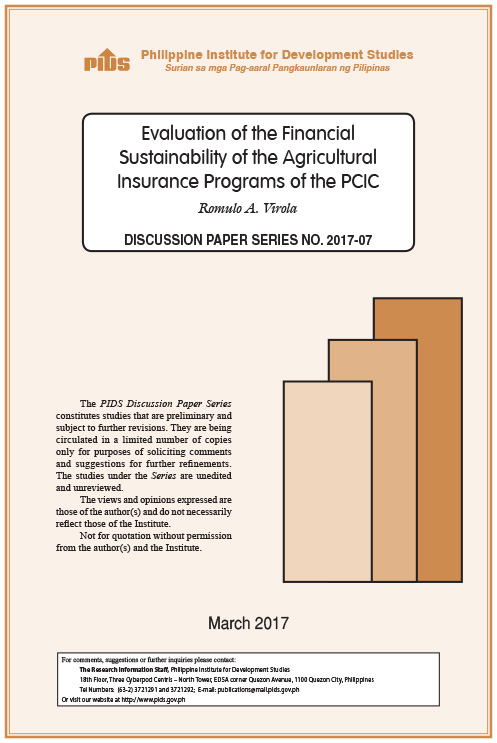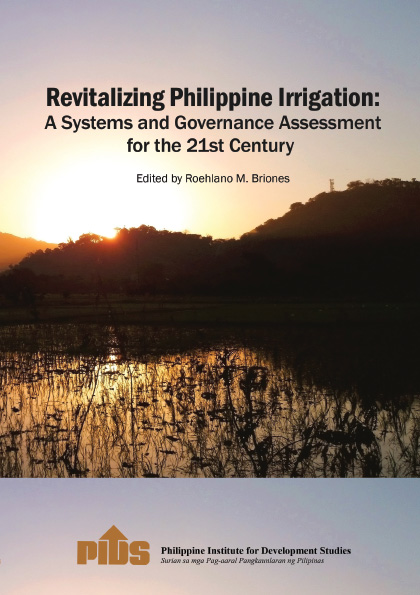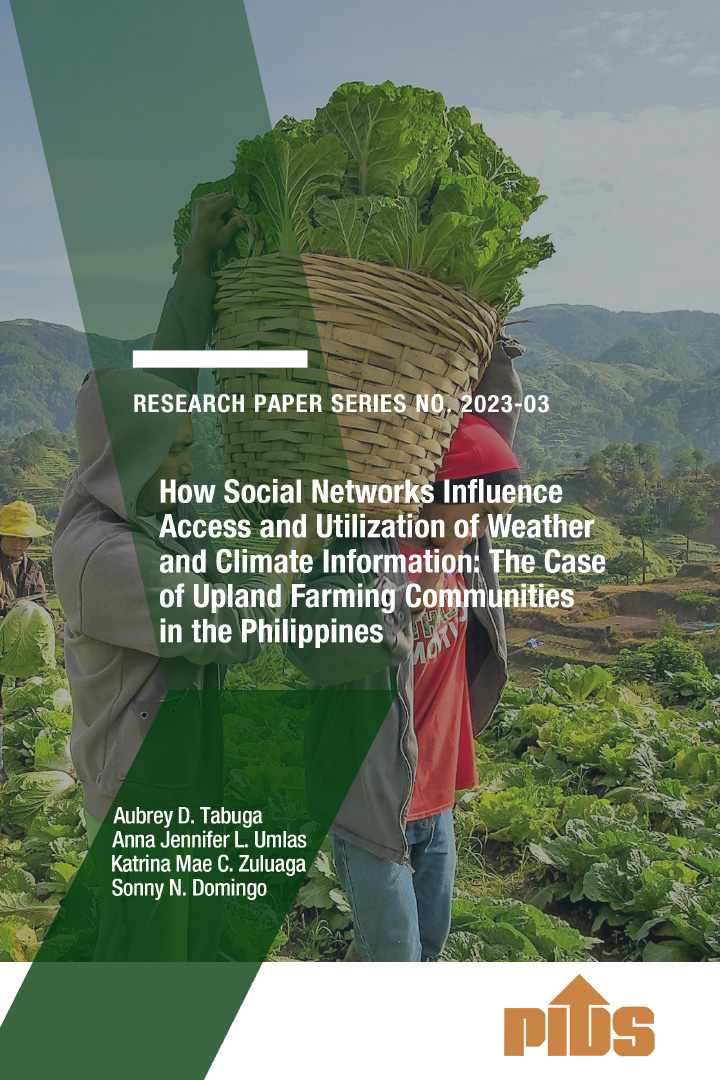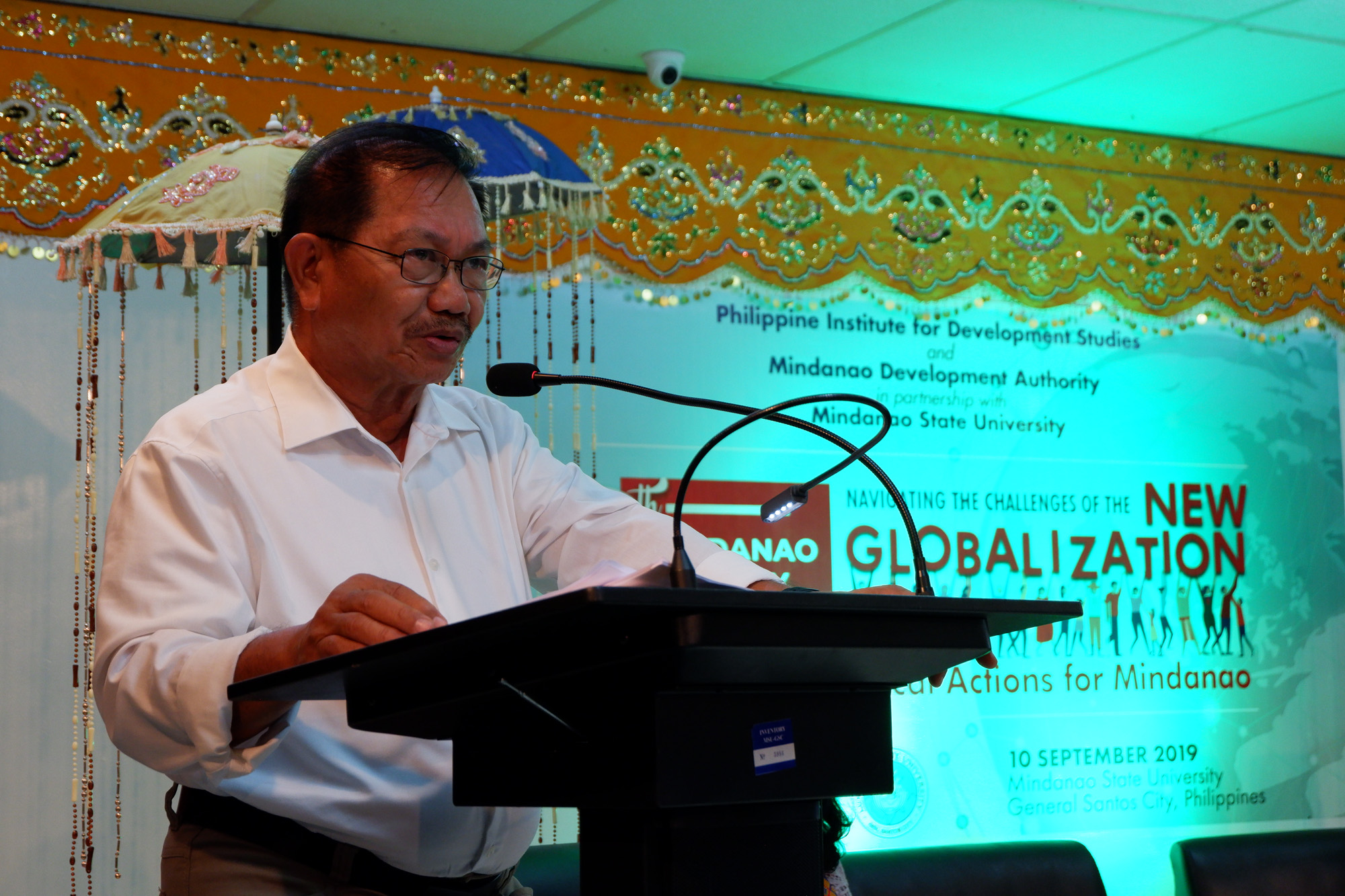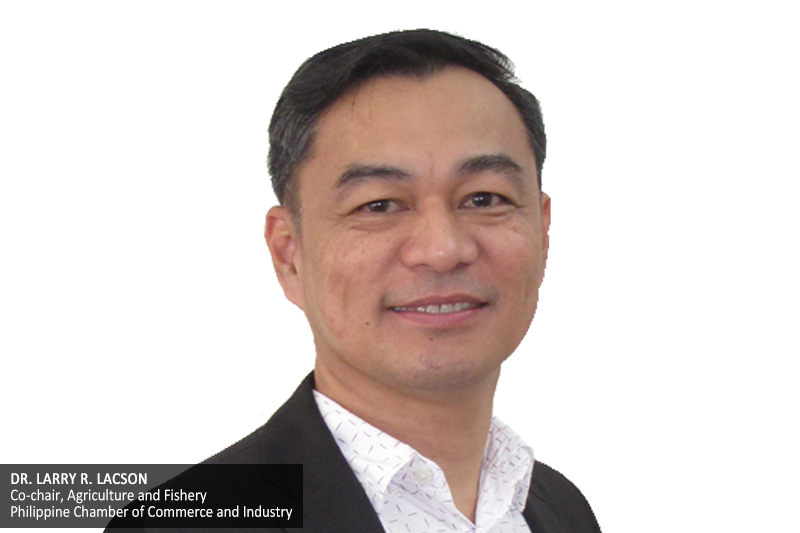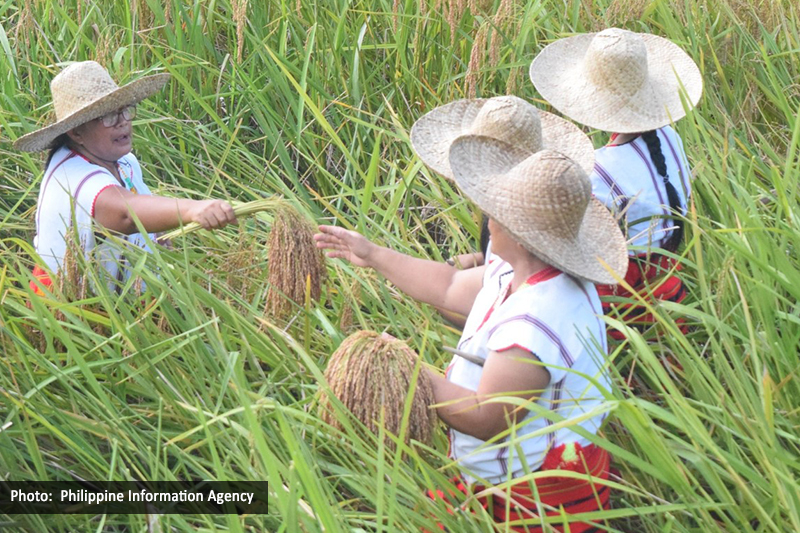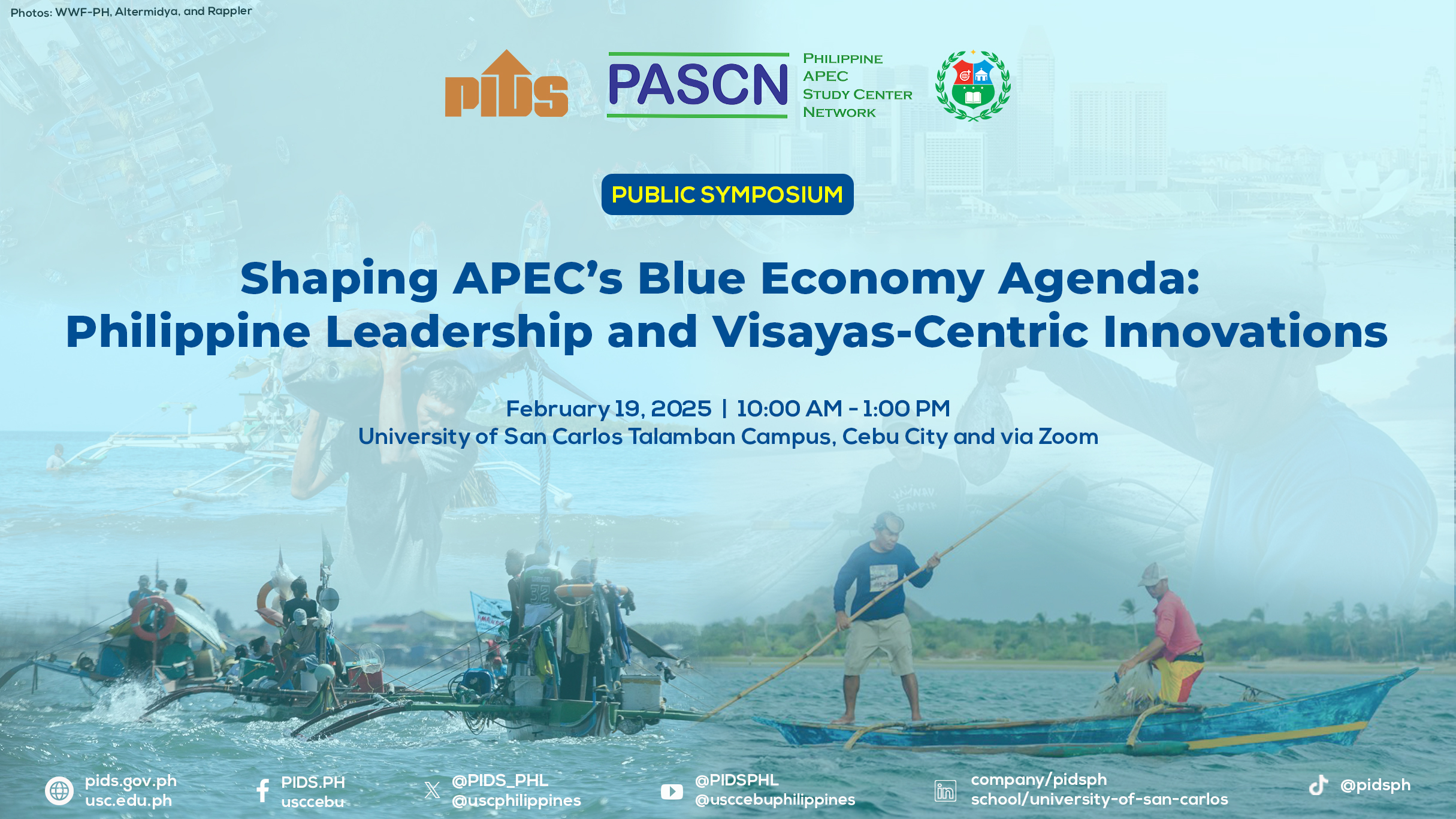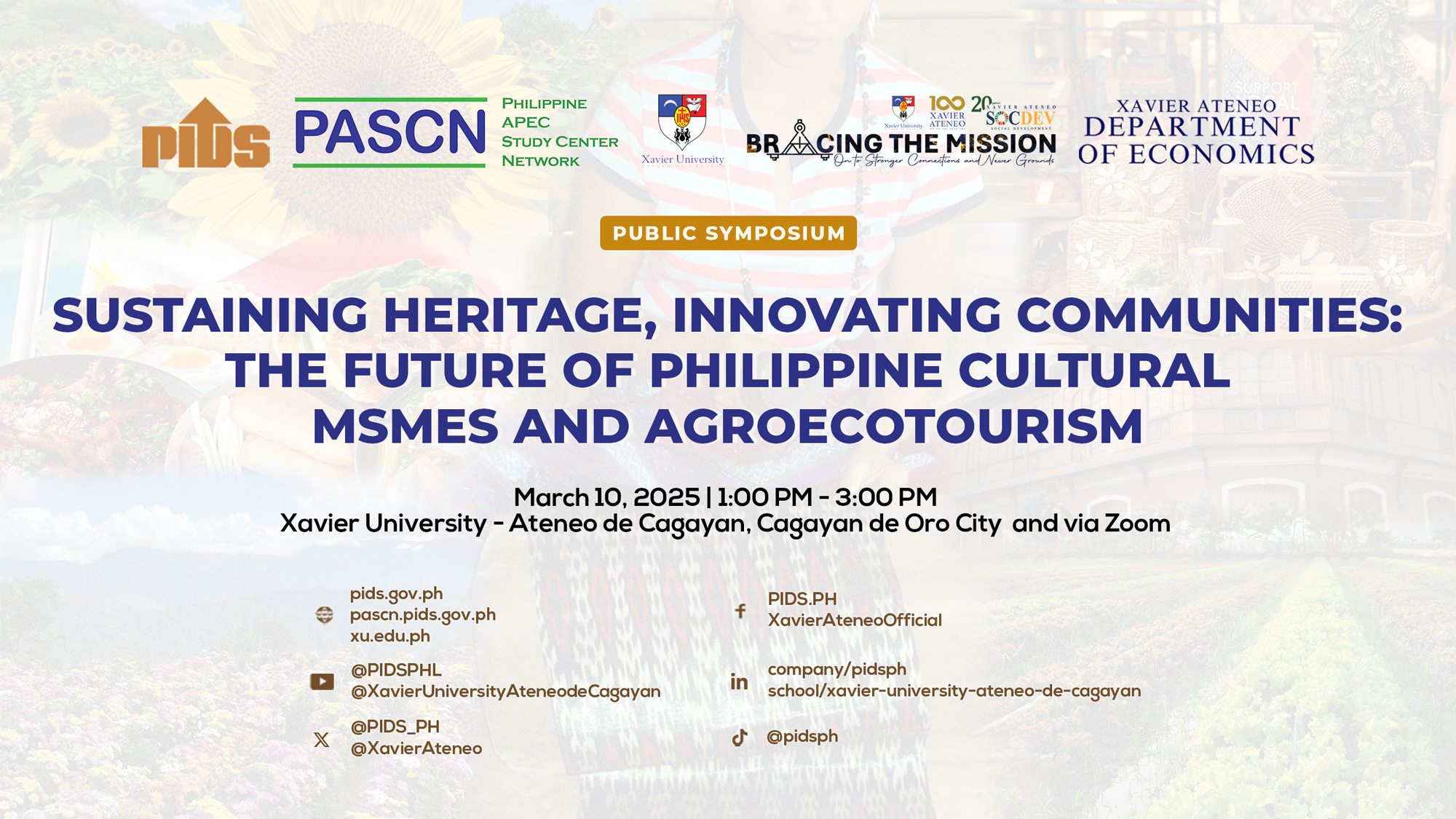The Philippine Crop Insurance Corporation (PCIC) started implementing the Agriculture Insurance Program (AIP) of the Philippines in 1981. Since then, the AIP has expanded its coverage from palay and corn to other crops and to other services including life and accidental death insurance to farmers and their families. As with most AIPs in other countries, the program provides premium subsidy that averaged 61 percent of gross premiums from 1981 to 2014 for palay and corn farmers. The paper finds that from 1987 to 2013, the penetration rate for the AIP has not been impressive: 4.5 percent for palay and 0.9 percent for corn; some regions have been underserved; and operating costs had been high with a historical average of 50 percent of premiums. Moreover, the AIP incurred an average loss ratio of 61 percent from 1981 to 2013 and the insurance coverage share of palay and corn farmers has shrunk over the years with the biggest share now going to Term Insurance Packages. While clear improvements have been incorporated in the program, such as the subsidized coverage of the Registry System for Basic Sectors in Agriculture beneficiaries and the streamlining of PCIC operations, the paper notes various areas of concern that need to be addressed toward improving the AIP: increasing penetration rate and expanding the coverage of marginalized farmers, rationalizing the subsidized coverage of even big-time farmers; extending coverage to underserved regions especially those prone to typhoons and flooding; introducing innovative insurance products that can reduce operating costs; reviewing the premium and premium subsidy structure including differentials across regions; irregular or unsustained actuarial inputs in assessing the actuarial solvency of the AIP; and the need for regulatory oversight on PCIC insurance operations.

